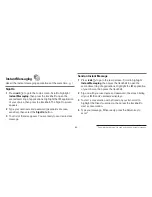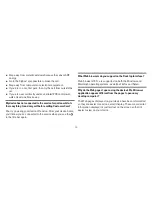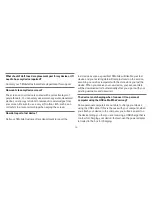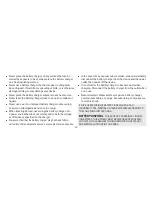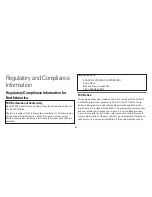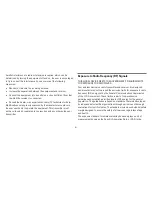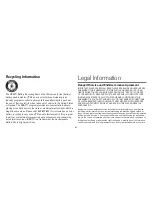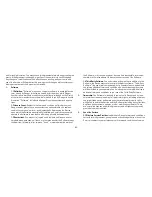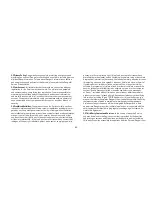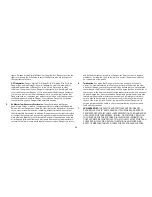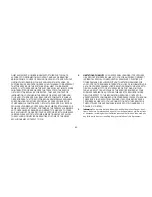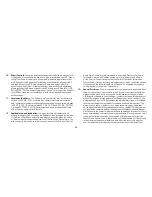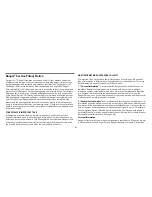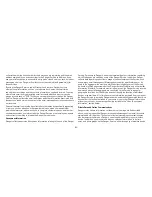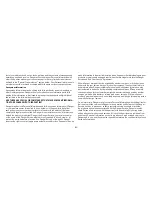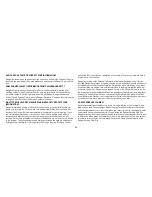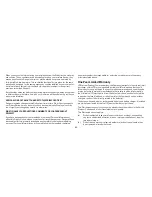
-8-
United States and Canada, the SAR limit for mobile devices used by
the public is 1.6 watts/kg (W/kg) averaged over one gram of tissue. The
FCC has granted an Equipment Authorization for this wireless device
with all reported SAR levels evaluated as in compliance with the FCC RF
emission guidelines. For this PV50 model, the highest SAR value when
tested for use at the ear is 0.89W/kg and when worn on the body, as
described in this guide, is 1.34W/kg. SAR information for this device is
on file with the FCC and can be found under the Display Grant section of
http://www.fcc.gov/oet/fccid after searching on FCC ID: APYNAR0063
for the PV50 model (850/900/1800/1900 MHz).
For body-worn operation, to maintain compliance with FCC RF
exposure guidelines, use the supplied carrying case. Use of non-
approved accessories may violate FCC RF exposure guidelines and
should be avoided. When carrying the device on your person, it is
recommended to turn the screen display in toward the body in order to
minimize RF exposure and maximize antenna efficiency.
Hearing Aid Compatibility with Mobile Phones
When some mobile phones are used near some hearing devices (hearing
aids and cochlear implants), users may detect a buzzing, humming,
or whining noise. Some hearing devices are more immune than others
to this interference noise, and phones also vary in the amount of
interference they generate.
The wireless telephone industry has developed ratings for some of their
mobile phones, to assist hearing device users in finding phones that
may be compatible with their hearing devices. Not all phones have been
rated. Phones that are rated have the rating on their box or a label on the
box.
The ratings are not guarantees. Results will vary depending on the user’s
hearing device and hearing loss. If your hearing device happens to be
vulnerable to interference, you may not be able to use a rated phone
successfully. Trying out the phone with your hearing device is the best
way to evaluate it for your personal needs.

